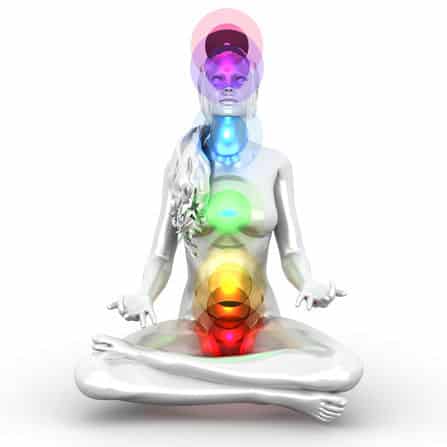

As we discussed in the first article, “Mind-Body Connections: How the Physical Body Is Affected By Stress,” the nervous system handles all body functions including consciousness, sensory information and hormonal production. This is how the physical mind and body are connected to the emotional state of the individual.
Massage therapy has been shown to be a significant tool for reducing stress and alleviating the physical symptoms of stress: insomnia, digestive upset and anxiety. There are many different theories on how exactly this mind-body connection works and how it can be utilized to maximize health and wellness:
Louise Hay
One of the foremost pioneers in the field of this mind-body connection, Louse Hay believed, correctly, that thoughts (mind and emotion) impacted both on our energetic bodies and on our physical health. She cautioned against allowing our thoughts to dwell on negative messages of emotional or physical pain, illness or financial limitations as the mind tends to act to create what we consciously focus on, even when that is what we do not want. She also recognized that, over time, the mind will impact the physical body and bring about a state of health or “disease,” through hormonal (chemical) or physical (postural) consistencies that will reflect the thought and emotion pattern of the person.
Hay was one of the first people to produce a list of physical symptoms and corresponding mental and emotional thoughts that produced them. She also created mantras of positive thought processes to replace those which she found cause these common conditions. Hay understood that conscious or habitual thought led to habitual emotions, which began a chain of events (nervous system and hormonal reactions) that led to the physical manifestation of the condition. She felt that “we create our experiences, our reality, and everyone in it (Hay, 1987).”
Here are some examples from Hay’s (1987) list of common thought/disease connections:
- Headaches – invalidating the self, repressed anger
- Sinus problems – irritated by someone or something
- Low back problems – fear and lack of money or financial support
- Upper back problems – lack of emotional support or love
- Constipation – not releasing old thoughts and clinging to the past
Essentially, Hay found through experience and empirical evidence that certain physical manifestations linked back to certain emotional states and thought patterns that either preempted, or resulted from them.
Richard Gerber
Richard Gerber wrote a scientifically based book on this idea of a mind-body connection in Vibrational Medicine, where he explored the energetic and physical patterns of the body with high-tech equipment while documenting the mental and emotional factors involved. He defines consciousness as a form of energy and is focused on the energetic techniques of complementary healing and treatments, but he shows us that there is in fact a connection between the mental-emotional and the physical with the use of technology such as EKG and ultrasounds.
He points out that modern medicine uses a “problem-oriented approach” to address “specific identifiable problems” with an “endpoint of therapy being the resolution of those problems (Gerber, 2001).” Gerber utilized the Illness/Wellness Continuum developed by John W. Travis which rates health on a scale or continuum rather than simply healthy vs. disease. The Illness/Wellness Continuum runs the gamut:
Gerber recognizes that what “affects the body also produces accompanying emotional distress, and physical illness produces emotional stress. Conversely, emotional disturbances contribute to bodily symptoms such as depression or expression of stress-related disorders (Gerber, 2001).”
Wilhelm Reich
Wilhelm Reich is the founder of Orgone, a theory of emotional armoring. Essentially, Reich believed that when emotions are repressed, the body contracts and constricts. This contraction and constriction over time results in postural problems that can eventually cause physical problems, even crippling the person. An example of this is when someone habitually hunches over as a coping mechanism for some emotional state – such as when on the receiving end of emotional abusive dialog – eventually they have upper back and neck pain that can become debilitating. Constant holding in constricted patterns leads to muscle stiffness, arthritis, bursitis, and other conditions. This emotional armoring can also lead to, and be symptomatic of, conditions such as depression, metabolic conditions and more.
There has been significant research done in the mind-body area overall. Studies have been done proving babies thrive when comforted with touch, meditation aids cancer patients in reducing pain and improving sleep, insomnia patients report considerable improvement in symptoms when they undergo stress management training. Most importantly, the immune system has been shown to suffer when the individual is under stress.
The massage and bodywork field has long known that there is a mind-body connection and that mental and emotional stress gets “stuck” in the physical body and that is taken into account during a massage treatment. In fact, massage therapy has been shown to reduce stress symptoms significantly and has proven to be a significant part of the recovery process for those undergoing serious health problems.
Knowing how the body connects thought, emotion and the physical body, and understanding some of the theories behind the mind-body connection is a significant step in beginning to use this knowledge to improve health through massage therapy.











